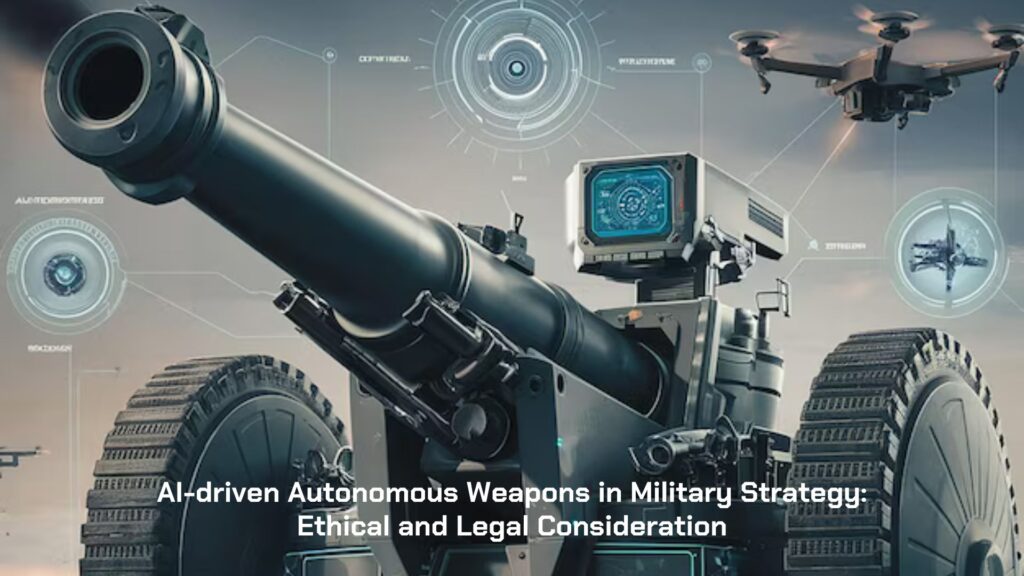AI‑Powered Autonomous Weapons Risk: How We Face a New Era of Warfare
Published June 20, 2025 • Category: Defense & AI Ethics
AI‑Powered Autonomous Weapons Risk is no longer speculative—it’s a pressing global concern. As military AI systems become increasingly capable of lethal decisions without human oversight, the potential threats to ethics, stability, and human rights escalate rapidly.

What Is AI‑Powered Autonomous Weapons Risk?
AI‑powered autonomous weapons (AWS) refer to systems that can identify, target, and engage threats using artificial intelligence—often with little to no “human-in-the-loop.” This shifts life-and-death decisions from humans to opaque algorithms, raising stakes across multiple fronts :contentReference[oaicite:0]{index=0}.
Why the Risk Is Real and Immediate
- Opaque AI decisions: Many systems operate as “black‑boxes,” making prediction failures and errors hard to trace :contentReference[oaicite:1]{index=1}.
- Geopolitical arms races: Nations like Russia and China are racing toward AI weapons, increasing conflict likelihood in volatile regions :contentReference[oaicite:2]{index=2}.
- Escalation risks: Autonomous systems can spark rapid, unintentional conflicts—think “flash wars” with no human checks :contentReference[oaicite:3]{index=3}.
Ethical, Legal, and Humanitarian Challenges
The AI‑Powered Autonomous Weapons Risk goes beyond technology:
- Accountability vacuum: When a robot misfires, who is responsible—the developer, commander, or manufacturer?
- Harm to civilians: AI systems may fail to distinguish civilians from combatants, violating International Humanitarian Law :contentReference[oaicite:4]{index=4}.
- Dehumanization: Automating killing further erodes empathy and human judgement from warfare :contentReference[oaicite:5]{index=5}.
Geopolitical Consequences and Strategic Instability
AI‑Powered Autonomous Weapons Risk also disrupts global equilibrium:
- Lowered war thresholds: Governments may initiate conflict with fewer human casualties at home :contentReference[oaicite:6]{index=6}.
- Science censorship: Governments may restrict AI research under national security, hampering innovation :contentReference[oaicite:7]{index=7}.
Existing Efforts to Mitigate the Risk
Global discussion on this risk has increased:
- UN Debates: UN’s Convention on Conventional Weapons (CCW) has discussed ethics and regulation since 2014, but no binding treaty yet :contentReference[oaicite:8]{index=8}.
- Policy demands: Experts call for international agreements mandating meaningful human oversight and banning fully autonomous weapons :contentReference[oaicite:9]{index=9}.
- Civil society action: Campaigns like “Stop Killer Robots” push for enforceable limits and transparency :contentReference[oaicite:10]{index=10}.
How to Reduce the AI‑Powered Autonomous Weapons Risk
- Insist on human-in-the-loop: Ensure every lethal decision has direct human veto power :contentReference[oaicite:11]{index=11}.
- Create a binding treaty: International regulation limiting AWS deployment and requiring transparency :contentReference[oaicite:12]{index=12}.
- Ethical development standards: AI training must emphasize reliability, bias mitigation, and explainability :contentReference[oaicite:13]{index=13}.
- Legal accountability: Lambda legal frameworks so developers and commanders face consequences for misuse.
- Public awareness: Outreach, media coverage, and education to build democratic support for meaningful oversight :contentReference[oaicite:14]{index=14}.
Further Reading & Resources
- AI‑Powered Autonomous Weapons Risk Geopolitical Instability (arXiv) :contentReference[oaicite:15]{index=15}
- Technical Risks of Lethal Autonomous Weapons (arXiv) :contentReference[oaicite:16]{index=16}
- Lethal Autonomous Weapon (Wikipedia) :contentReference[oaicite:17]{index=17}
- Internal: AWS Governance Framework
In sum, the AI‑Powered Autonomous Weapons Risk is not science fiction—it is present and growing. Unless the world acts now with binding international rules, human oversight, and legal accountability, we may soon cross a threshold that forever alters the ethics of war.



